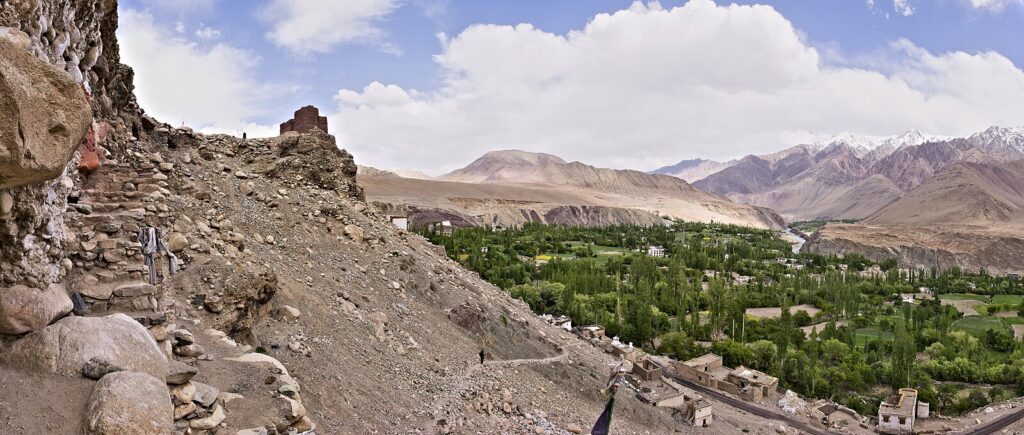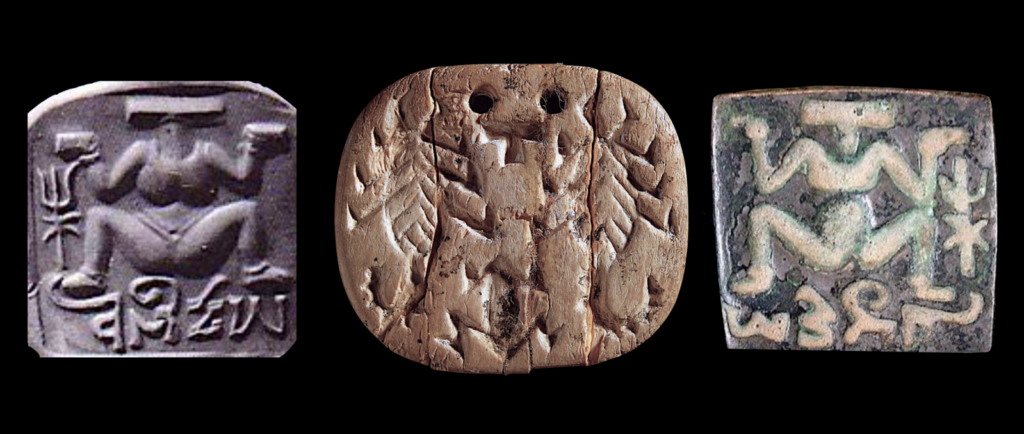Urban planning refers to the process of structuring and appropriating urban spaces to their highest potential. It sounds like a modern term, but you may be surprised to hear that urban planning was already being used 5,000 years ago.
The Indus Valley Civilization is one of the earliest in the world and the oldest in the Indian subcontinent. The discovery of the evidence of this civilization has impressed modern-day urban planners with decades of experience in the field.
That’s just one of the many interesting things discovered about one of the oldest civilizations in Asia.

The Discovery
It all began with Charles Masson. He was born James Lewis in London in 1980. He joined the East India Company in 1822 but deserted five years later. He changed his name to Masson and decided to go back to the East India Company.
Masson returned to the company no longer a soldier but an archeologist. He was assigned to excavate in what is modern-day Afghanistan.
He discovered bits and pieces of the Indus Valley Civilization. Between 1833 and 1838, Masson led a team that collected 60,000 old coins and excavated dozens of archeological sites in South Asia.
Masson was a history buff and traced the military campaigns of Alexander the Great. But what he discovered was much older than the Macedonian leader—though he didn’t know it at that time.
Harappa
The Indus Civilization dates back to 3300 Before the Common Era (BCE).
One of Masson’s biggest discoveries was Harappa in Punjab, a huge metropolis. However, because of Masson’s interest in Alexander the Great, it was mistakenly recorded as one of his campaign locations.
Locals plundered the area for baked bricks that were used as track ballast in Punjab railway lines. Modern-day archeological dig sites are sealed off to the public, but the 1800s were a different time.
The Harappan bricks had many stories that weren’t told until the official establishment of the Archeological Survey of India (ASI) in 1861. British engineer Sir Alexander Cunningham was the first director-general of AIS. He brought a team to Harappa with the theory that it was a lost Buddhist City.
However, archeological digs in the area were not a priority. They were often stalled when there was new leadership in the ASI or India. It wasn’t until 1924 that academics established a link between the Harappan finds and their similarities to Bronze Age artifacts found in Mesopotamia and Iran.
The project hit another snag during the partition of India in 1947. Much of the Indus Valley Civilization was in Pakistan, which meant ASI had limited authority over it. Pakistan did work through the Archeological Survey of Pakistan, and ASI for India.
Until today, much of Harappa is still unexcavated. Artifacts date back to 3300 BCE, and the area had been continuously inhabited until 1300 BCE. Archeologists believe Harappa had been the urban center in ancient times.

What To Know About the Indus Valley Civilization
The historical site got its name from the Indus River, as it lies in the valley of the body of water.
Experts have established a timeline for the civilization:
- Pre-Harappan (7000 – 5500 BCE) – true to the Neolithic Period, there is evidence of agricultural activities and the manufacture of ceramics and other tools.
- Early Harappan (5500 – 2800 BCE) – warehouses near motorways indicate trade, which experts believed to have been done with China, Egypt, and Mesopotamia.
- Mature Harappan (2800 – 1900 BCE) – evidence of rapid urbanization, with Harappa and Mohenjo-Daro showing the most development. Hundreds of other cities were theorized to have been built in the region.
- Late Harappan (1900 – 1500 BCE) – the civilization began to decline.
- Post Harappan (1500 – 600 BCE) – the population had abandoned the dozens of cities within the Indus Valley Civilization.
The dates are on par with the Egyptian and Mesopotamian Civilizations, which were more popular and well-known.
Part of the reason for this is that the Indus Valley Civilization was discovered much later. Its excavation was stalled for decades because the area covers three disparate countries: Pakistan, India, and Afghanistan.
The writing system discovered in the area remains undeciphered, unlike Ancient Egypt’s hieroglyphics.
Archeologists have established at least two cities in the Indus Valley Civilization: the earlier-mentioned Harappa, located in the Punjab region, and Mohenjo-Daro, which is located in the Sindh region of modern-day Pakistan.
Both cities were believed to have accommodated tens and thousands of people. Other ancient cities only had around 10,000.
The entire Indus Valley Civilization was believed to have had a population of five million.
Theories on the Dwindling Population
How could an entire civilization disappear?
The Indus Valley Civilization began to dwindle sometime between 1900 and 1500 BCE. One theory was that Aryans had invaded the territory.
However, the Aryan Invasion Theory cannot be substantiated. The Aryans, who were linked to Persians, migrated to the Indus River Valley peacefully.
Another theory was that people were forced to evacuate the area because of climate change. The Sarasvati River, said to run adjacent to the Indus River, reportedly dried up.
This left the population with no options for water. It didn’t help that the area was also overpopulated, with millions of people competing for resources.
Impressive Urban Planning
One of the most astonishing things in the Indus Valley Civilization is the modern structures during the Bronze Age. Some of the artifacts discovered in the area indicated carefully curated cities, as evidenced by noticeable fixed patterns.
Streets were perfectly planned, and there were closed drainage systems. Other elements discovered were granaries, various buildings, and a lavish public bath.
Houses
The progression of homes was perfectly encapsulated in the Three Little Pigs story. There was a time when homes were built with straw and then progressed to wood as a sturdier material. Eventually, the people realized that bricks were the best option.
During the Bronze Age (3300 to 1200 BCE), houses in the rest of the world were mostly made of wood. In the Indus Valley Civilization, their structures were made of burnt bricks. Evidence has shown that even the toilets consisted of brick.
Streets
The streets had a fixed pattern: they all went straight and cut each other at right angles. The cities looked like they were structured into rectangular blocks.
There was also evidence of ancient street lamps in important corners. This indicates proper urban planning thousands of years ago.
Drainage System
Other cities had yet to perfect their drainage systems, but they were already well-built in the Indus Valley Civilization.
Scholars have said the residential blocks had an impressive connected drainage system—quite advanced for the age. Every house, which was made of brick, had a bathroom, kitchen, courtyard, and vertical and horizontal drains.
The kitchens and bathrooms had drains that were connected to the street gutters, which flowed into the river.
Baths
Common baths were popular in ancient times, and the Indus Valley Civilization showcased a great bath in the middle of the city. As with most of the structures in the area, the bath was a large rectangular tank made of burnt bricks.
It was large enough to be considered a public pool. The vicinity had structures that were believed to have been changing rooms.
The Indus Valley Civilization was a picture of an advanced society with tremendous urban planning.
Other Interesting Discoveries From the Indus Valley Civilization
What other interesting discoveries were uncovered in the Harappa and Mohenjo-Daro?
Dentistry
There were no toothbrushes or toothpaste in ancient civilization, but dentists may have already worked for its residents.
Archeologists have discovered remains where teeth had holes believed to be from dental drills. Is it possible that the world’s first dentist came from the Indus Valley Civilization?
No Palaces, Temples, or Monuments
The biggest civilizations in human history had palaces indicating the home of their rulers or temples where people prayed. Monuments commemorating leaders, rulers, and other respected individuals were also standard.
None of these were ever discovered within the remains of the Indus Valley Civilization. So, what does this mean? Scholars are still trying to figure this out.
The cities had ample evidence of large and small houses, indicating that society members didn’t all live as equals. There were still affluent and underprivileged families. The rich had large homes and courtyards, while the not-so-wealthy families were limited to just two rooms.
Dancing Girl of Mohenjo-Daro
Displayed at the National Museum in New Delhi is the bronze statuette called the Dancing Girl. It was found in 1926 at the Mohenjo-Daro site and was said to have been created 4,500 years ago.
The artifact was made through lost-wax casting, which indicated ancient people’s expertise in creating bronze art. It was called Dancing Girl because of her pose.
What Is Going on at the Harappan and Mohenjo-Daro Sites Today?
The Indus Valley Civilization is now a tourist destination that people can visit. There are three entrance points in three countries.
In India, visitors can check out eight sites from four states: Gujarat, Rajasthan, Haryana, and Punjab. Pakistan has four, including Punjab, Sindh, and Balochistan. Afghanistan also has one site in Shortugai.
Academics are continuing to learn more about the civilization. They won’t stop until the local script has been deciphered, which would open more doors to a better understanding of the history and culture of its people.
Even more important to understand is how and why the civilization disappeared despite its modern amenities.

